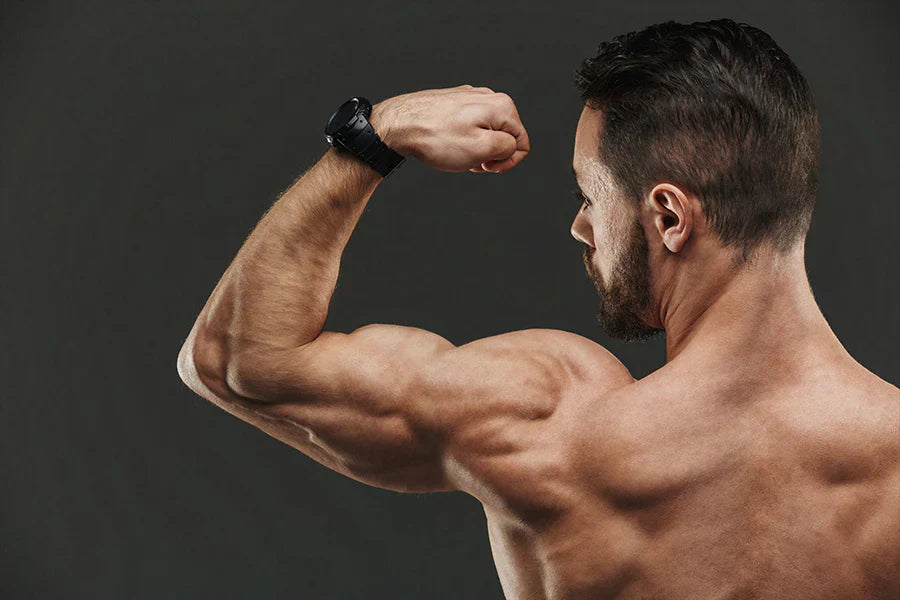Strong, sculpted shoulders aren’t just about aesthetics, they’re the foundation for improved posture, injury prevention, and overall upper-body strength. Yet, many struggle to find workouts that truly target every part of the shoulder with precision and control.
That’s where cable machines come in. Their constant tension and adjustable angles provide an unmatched way to isolate and challenge your deltoids in ways free weights often can’t.
Some of these exercises also have variations that can be done with Adjustable Dumbbell Weights, adding versatility to your routine.
Cable machines provide constant tension and adjustable angles, offering an unmatched way to isolate and challenge the deltoids with control and intensity.
These 12 cable workouts deliver focused resistance to help you build muscle, enhance definition, and push past training plateaus.
12 Cable Exercises for Sculpted Shoulders
Targeting your shoulders with cable exercises allows for precise muscle engagement and continuous tension throughout each movement. The following 12 exercises are designed to sculpt and strengthen every part of your shoulders for a balanced, defined look.
1. Standing Cable Shoulder Press

The standing cable shoulder press is a fundamental compound exercise that primarily targets the anterior and medial deltoids. It promotes balanced shoulder development by engaging muscles responsible for lifting the arms forward and sideways.
This exercise is essential for building shoulder strength, improving posture, and enhancing overall upper-body stability. Its controlled cable resistance encourages consistent tension throughout the movement, maximizing muscle activation and growth.
How to Perform Standing Cable Shoulder Press:
- Adjust the cable machine pulley to the lowest setting and attach a single-handle grip to each side.
- Stand with feet shoulder-width apart, gripping the handles with an overhand grip.
- Position your hands at shoulder height, elbows bent at 90 degrees.
- Keep your back straight and engage your core for stability.
- Exhale and press the handles overhead, fully extending your arms.
- Pause briefly at the top, then inhale as you slowly return to the starting position with control.
- Complete 3-4 sets of 10-12 repetitions, focusing on smooth, controlled movements.
2. Seated Cable Rear Delt Fly

The seated cable rear delt fly is a focused exercise that targets the posterior deltoids, the muscles located on the back of your shoulders. Strengthening this area is key to balanced shoulder development and helps prevent muscular imbalances.
This movement also improves shoulder stability and supports better performance in compound exercises like rows and pushups, making it an essential addition to your shoulder training routine.
How to Perform Seated Cable Rear Delt Fly:
- Sit on a stable bench facing the low pulley station.
- Grasp each handle with your hands.
- Raise your arms out to the sides at about a 45-degree angle.
- Pull your hands backward, bringing them toward the centerline of your body.
- Slowly return to the starting position with control.
- Repeat for the desired number of repetitions.
3. Cable Upright Row
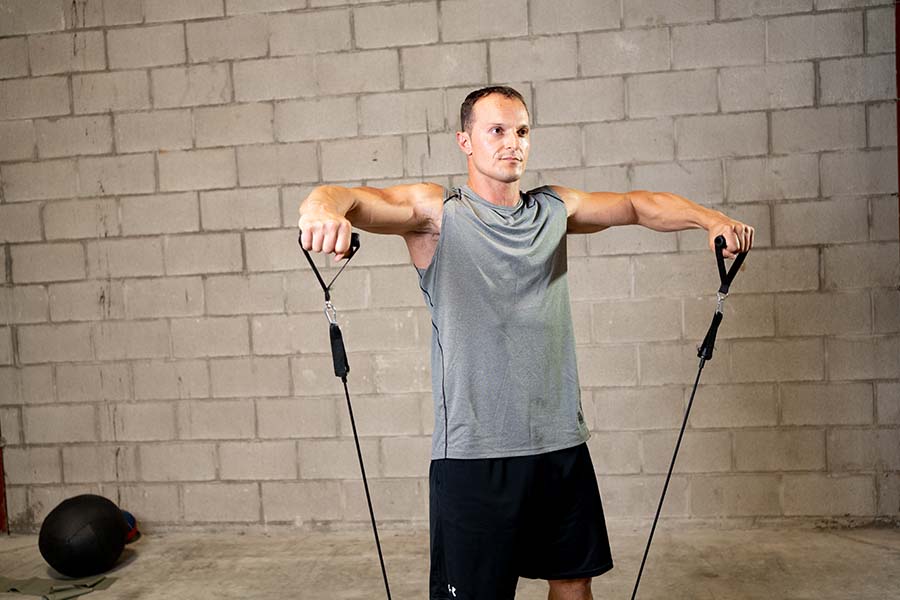
The cable upright row is a compound movement that sculpts the shoulders while engaging multiple upper-body muscles, including the deltoids, trapezius, and rhomboids. It helps create a defined, strong upper back and shoulder contour.
This exercise also enhances posture and shoulder stability, making it valuable for overall upper-body strength and injury prevention.
How to Perform Cable Upright Row:
- Stand with feet shoulder-width apart facing the cable machine.
- Grasp the handle with arms wider than shoulder-width.
- Drive your elbows upward toward your chin, keeping the bar close to your body.
- Slowly lower the handle back to the starting position.
- Perform 4 sets of 10-12 repetitions with controlled movements.
4. Standing Cable Face Pull
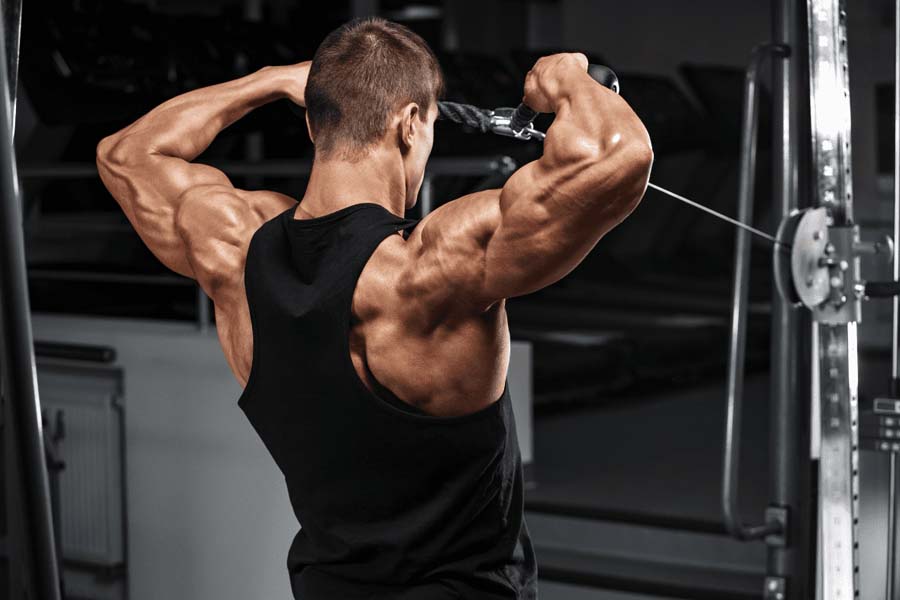
The standing cable face pull targets the rear deltoids, trapezius, rhomboids, and teres major muscles, crucial for balanced shoulder strength and upper back stability. This exercise plays a vital role in improving posture and preventing shoulder injuries.
Incorporating face pulls helps strengthen the muscles responsible for scapular movement and shoulder health, which is essential for maintaining an active and pain-free lifestyle.
How to Perform Standing Cable Face Pull:
- Stand facing away from the cable machine with feet hip-width apart.
- Hold both sides of the rope or handle attachment.
- Pull the handles outward, bringing them toward shoulder blade level.
- Slowly return to the starting position under control.
- Complete 1-3 sets of 8-15 repetitions, focusing on form and muscle engagement.
5. Standing Cable Lateral Raise
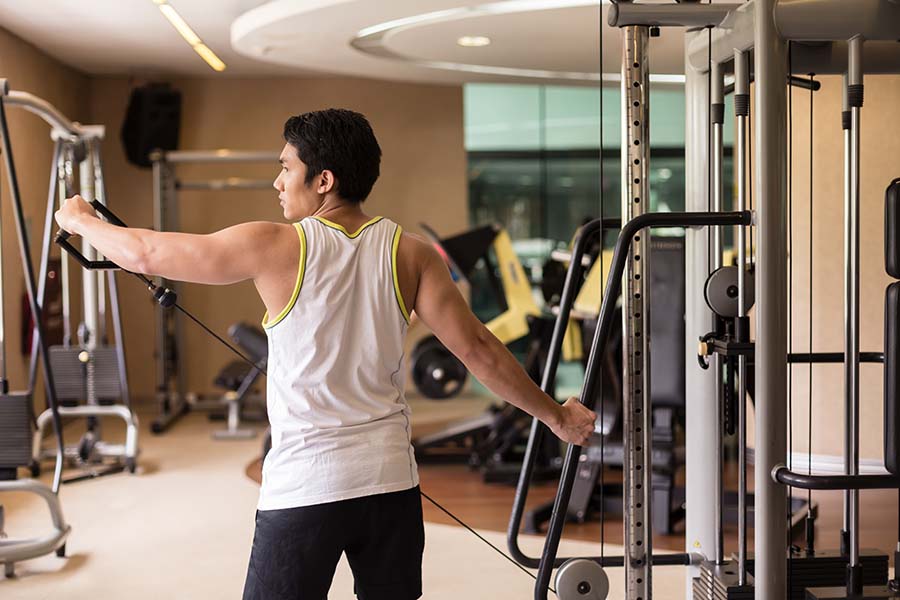
The standing cable lateral raise is an excellent exercise that targets all three heads of the deltoid muscle, with a focus on the medial deltoid. It plays a crucial role in widening the shoulders and creating a balanced, sculpted look.
This movement improves shoulder strength, endurance, and stability, making it essential for overall shoulder development and injury prevention.
How to Perform Standing Cable Lateral Raise:
- Stand close to a cable station with weights loaded on either side.
- Raise both arms simultaneously to shoulder height, keeping them straight.
- Lower one arm at a time back to the starting position with control.
- Repeat for the desired number of sets and repetitions.
6. Cable Arnold Press

The cable Arnold press targets multiple upper body muscles, including the deltoids, biceps, triceps, and trapezius. The combination of pressing and rotating movements promotes balanced shoulder development and improved posture.
This exercise enhances shoulder stability and helps prevent muscle imbalances by engaging the muscles through a full range of motion.
How to Perform Cable Arnold Press:
- Set the cable machine pulley to the lowest position and attach D-handles.
- Stand with feet shoulder-width apart facing away from the machine.
- Hold the D-handles with palms facing you and elbows slightly bent, forearms parallel to the floor.
- Press the handles upward while rotating your arms until fully extended.
- Reverse the rotation as you return to the starting position.
- Perform 3-4 sets of 8-12 controlled repetitions.
7. Cable Underhand Front Raise

The cable underhand front raise primarily targets the anterior deltoids while engaging the biceps slightly. Its controlled resistance reduces joint stress compared to free weights.
This exercise is effective for building front shoulder strength and shaping the shoulder contour with minimal risk of injury.
How to Perform Cable Underhand Front Raise:
- Adjust the cable machine pulley to the lowest setting.
- Stand with feet shoulder-width apart.
- Grip the bar with hands slightly wider than shoulder width, palms facing up.
- Lift the bar straight up, engaging your core, until arms are parallel to the floor.
- Slowly lower the bar back to the starting position.
- Repeat for the desired number of repetitions.
8. Cable Shrug Pull Exercise

The cable shrug targets the trapezius muscles, improving neck and shoulder stability. Constant cable tension maximizes muscle engagement, promoting growth and strength in this area.
This exercise is vital for maintaining proper posture and developing upper trap definition, supporting overall shoulder health.
How to Perform Cable Shrug Pull Exercise:
- Set the cable machine to a low pulley position.
- Stand facing the machine with feet shoulder-width apart.
- Grasp the bar with arms straight and shoulders relaxed.
- Shrug your shoulders upward toward your ears, contracting the traps.
- Lower the bar back down with control.
- Perform several sets with proper form and controlled reps.
9. Single Arm Cable Alternating Shoulder Press

The single-arm cable alternating shoulder press is excellent for isolating each deltoid independently while engaging your core for stability. This unilateral movement enhances the mind-muscle connection, allowing better focus and activation on each shoulder.
This exercise primarily targets the anterior and medial deltoids, promoting balanced muscle development and improving shoulder strength.
How to Perform Single Arm Cable Alternating Shoulder Press:
- Stand facing the cable machine with feet shoulder-width apart.
- Hold the handle with one hand at shoulder height, elbow bent at 90 degrees.
- Press the handle upward until your arm is fully extended overhead.
- Lower the handle back to the starting position with control.
- Complete the desired repetitions on one side before switching.
10. Cable Y Raise

The cable Y raise focuses on the deltoid muscles, especially the medial and posterior heads, helping improve posture and shoulder stability. This exercise strengthens the upper back and shoulders to support balanced and injury-free movement.
It is an effective movement to enhance shoulder endurance and maintain healthy muscle function for overhead activities.
How to Perform Cable Y Raise:
- Set the cable machine pulley to the lowest position and attach a D handle.
- Stand with feet shoulder-width apart and step back slightly, knees bent.
- Raise your arms upward and outward, forming a Y shape at shoulder height with straight arms.
- Lower the handles back to the starting position under control.
- Repeat for the desired number of repetitions, focusing on form.
11. Cable External Rotation
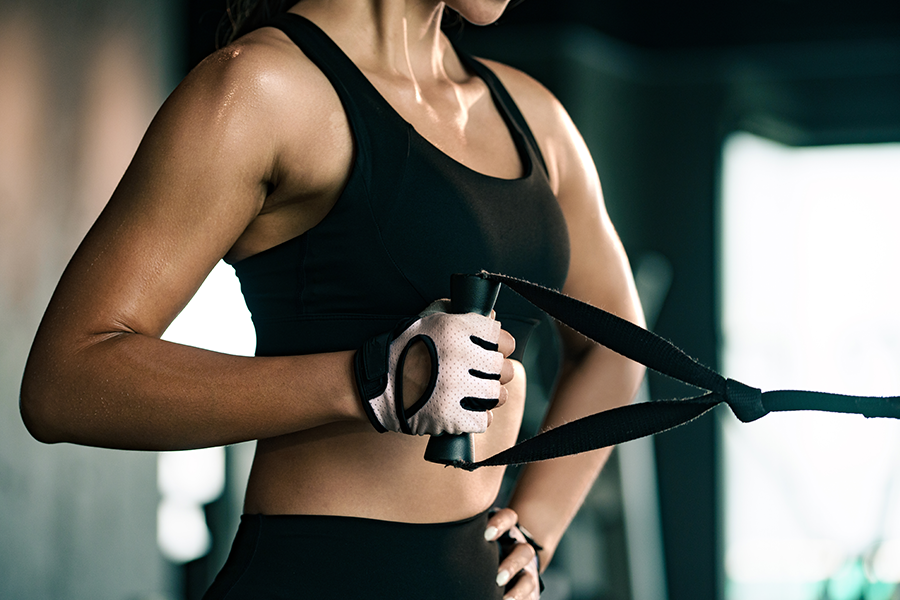
Cable external rotations strengthen the rotator cuff muscles, primarily the infraspinatus and teres minor. These muscles are crucial for shoulder joint stability and proper arm movement.
This exercise helps prevent shoulder injuries and supports healthy posture by balancing strength across the shoulder muscles.
How to Perform Cable External Rotation:
- Set the cable pulley to the lowest position and attach a D or rope handle.
- Stand sideways to the machine with feet shoulder-width apart.
- Hold the handle with the hand furthest from the machine, elbow bent slightly.
- Rotate your arm outward, moving the handle away from your body.
- Slowly return to the starting position.
- Perform the desired repetitions on each side.
12. Cable Internal Rotation
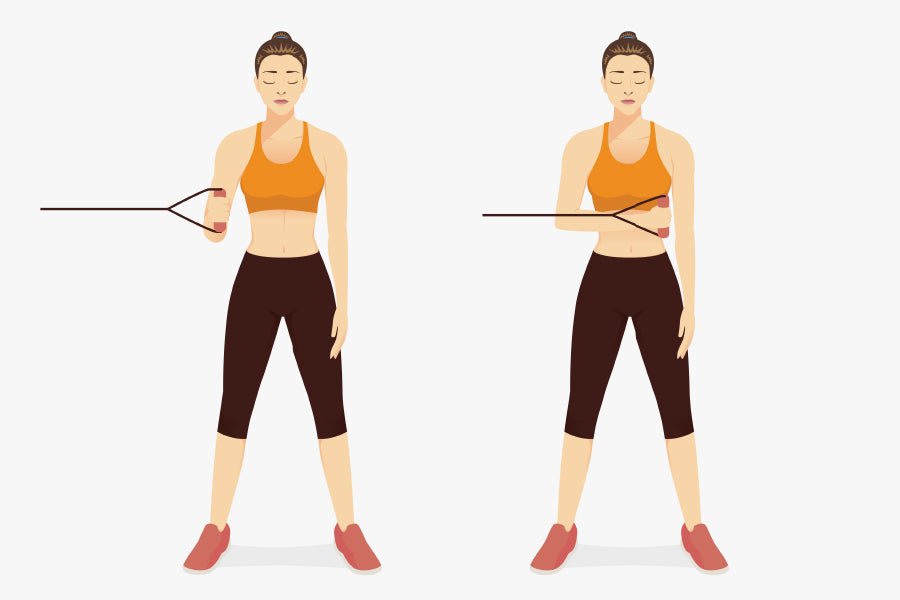
The cable internal rotation targets muscles responsible for inward shoulder movement, such as the subscapularis. Strengthening these muscles promotes shoulder stability and mobility.
This exercise balances opposing muscle groups, reducing the risk of joint imbalances and related injuries.
How to Perform Cable Internal Rotation:
- Adjust the cable pulley to shoulder height and attach a D or rope handle.
- Stand or kneel beside the machine with feet shoulder-width apart.
- Grasp the handle with the hand closest to the machine.
- Pull the handle inward toward your body using only your forearm.
- Pause briefly, then slowly return to the starting position.
- Complete the desired number of repetitions.
Conclusion
Mastering these 12 cable exercises will transform your shoulder workouts by targeting every key muscle group with precision and control. This comprehensive routine ensures balanced, sculpted shoulders that perform as great as they look.
Incorporate these movements into your training consistently to witness improved muscle activation, greater endurance, and lasting functional strength. With the right technique and dedication, you'll achieve well-rounded shoulder development that supports both your aesthetic and athletic goals.








